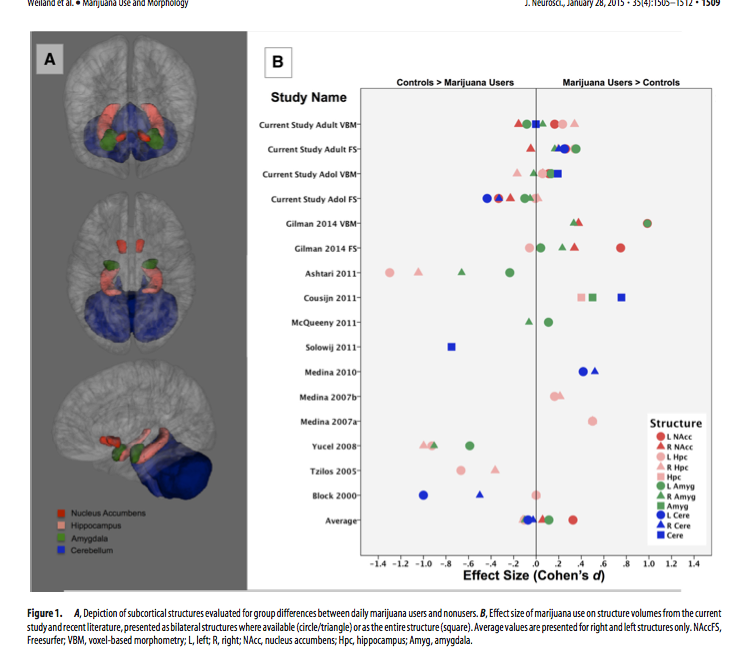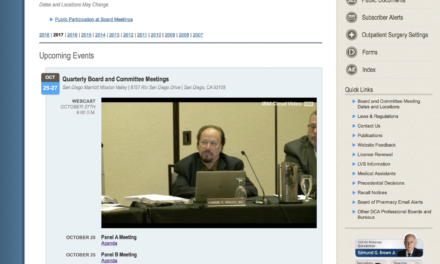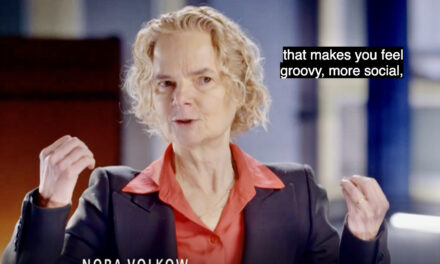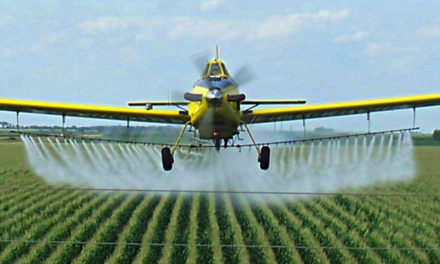Joe D. Goldstrich, MD, is the Society of Cannabis Clinicians’ liaison to the Medical Board of California. On a drive to an MBC meeting in Sacramento, he mentioned a documentary in which he and other doctors who were in Trauma Room One at Parkland Hospital in Dallas recall in detail their futile attempt to keep John F. Kennedy alive after he was shot on November 22, 1963. On the drive back I turned on the tape recorder and asked, “What were you doing at Parkland hospital?
Goldstrich: I was a fourth year medical student rotating through the neurosurgical service. The morning of November 22, I scrubbed with the chief of neurosurgery and the resident. The patient had a cervical disc herniation. So the disc had to be removed. And they went through the front of the neck instead of the back of the neck. So it was a brand new procedure and the first time this procedure had been done at Parkland Hospital. It’s now done routinely.
We did the surgery and the resident, who was a senior resident in neurosurgery, had to leave the hospital. And the chief, Kent Clark —not Clark Kent – who was the chairman of the department, went back to his office in the medical school, which was right next door. So that left me as the senior person on neurosurgery that morning. The chief said to me, said “Joe, the only complication in this procedure that I’m concerned about is that he gets a hematoma and it obstructs the windpipe and might require a tracheostomy, if he got the hematoma and it compressed the windpipe.’ He says, ‘Do you know how to do a tracheostomy? And I said, ‘Yes sir.’
I didn’t really know how to do one that well. I’d done one on a cadaver, but I’d never done one on a real person. So, we finished the procedure like at nine in the morning. He said ‘I’m going to put a tracheostomy set-up in this patient’s room,’ he was on the fifth floor by the way. ‘And if he has trouble breathing, don’t hesitate to do a trach.’ I said, ‘yes sir.’ So, he left, everybody left, I was neurosurgery.
I immediately went to the library and started reading about tracheostomy, how to do it, the anatomy, all of the things that I would need to know. And I practiced the trach in my mind’s eye many times. And I left the library and thought ‘I can do that.’ I knew all the landmarks. At that point in time I was finishing medical school, I’d done some surgeries. So I was comfortable with having to do it. So, it gets to be around noontime, and I’m in the cafeteria which is on the first floor, eating lunch. And there comes a page over the loudspeaker for Dr. Clark, Dr. Clark.
And I’m eating lunch. I think, oh shit, the guy’s not breathing, I did something wrong, they’re calling Dr. Clark because he’s the higher up who did the surgery on the neck and he’s the attending physician. So I ran up, maybe it was the sixth floor, ran up five flights of stairs as fast as I could. Burst into this guy’s room, and he’s sitting up in bed reading a magazine. He was fine. I ran into the room and said, ‘Oh I’m so relieved you’re okay. It’s not you that they’re paging Dr. Clark for. I wonder why they’re paging him. ‘ And he said, ‘I don’t know, but it looks like the motorcade’ – his room faced Harry Hines Boulevard, which is the street in front of Parkland. And he said, ‘It looks like there’s a motorcade pulling in here. So I ran to the nurses’ station, called Dr. Clark’s office in the medical school, and got his secretary who said – I said, they’re paging Dr. Clark. And she said, ‘He’s on his way to the hospital.
So I made the assumption, which was wrong, that he was on his way to whatever they were paging him for, that the hospital operator had called his office to tell him what had happened. But, I didn’t know better. In fact, that wasn’t what happened. And I’ll tell you about that in a minute. I didn’t learn what he was actually doing until just two years ago when another one of the guys who was in that seven roundtable told me his experience of the day. Anyway,
So I figured that they are bringing somebody to the emergency room and I better get there, because I am neurosurgery. There’s nobody else on neurosurgery in this hospital but me. So I ran down the stairs. The emergency room is on the ground floor. So I ran down six flights of stairs and as I got to the door, the stairs opened up into the emergency room. As I got to the door, there was a secret service person guarding the door. He was there ahead of the president. So when I got to the door, I said –
FG: You’re in your scrubs?
Goldstrich: Yeah, I’m still in my scrubs from the morning surgery. And he said, ‘Who are you?’ And I said, ‘Goldstrich, neurosurgery. ‘ He let me right in. So as I get into the emergency room, the gurney with the president was coming into the emergency room on his way to Trauma Room 1. And I just went with the gurney, into Trauma Room 1. Initially there were only a couple of medical personnel in Trauma Room 1. But, within two minutes senior members of the surgical residency staff and senior members of the surgical attending staff – I don’t know how much you’ve read about this event – but people like Carrico and Perry and McClelland were all there. So, I was right there with the initial evaluation. When I looked down, when the president came in, and there was an initial assessment, and I looked down and I saw this hole in his throat, a little tiny one maybe the size of dime… a small hole. I didn’t know anything about ballistics at the time, so I didn’t have any idea whether it was an entrance or an exit wound. And frankly, that didn’t even come into my mind whether it was an entrance or an exit wound. They put something in, maybe a retractor in, and you could look down and see the tracheal cartilages. So I knew the hole was in the trachea. Since I am now an expert on tracheostomy, my first thought is (I’m getting ahead of myself) – some of these senior surgical people said we have to do this other thing. There was no …
He couldn’t breathe with a face mask, because there was a hole in the trachea. So they said, we have to do a tracheostomy. The thing that I criticize myself most for in this whole event, is that I didn’t speak up. Because I knew that all they had to do was put a tracheostomy tube in that hole and they’d have a better airway established. But they cut through the hole, and ruined all of the forensic evidence. So the pathology report that came from Bethesda never reflected what that hole looked like
And nobody ever, ever incorporated that into the analysis until we sat down and discussed that issue at this roundtable as part of this documentary that’s coming out soon. So then, since I’m the junior person in the room, so I’m there, there’s no neurosurgeon, I never really saw the brains hanging out the back of the skull. Other people talked about it. I looked a couple of times, but I never really saw his brains hanging out.
Dr. Clark, he would have had adequate time to be in the emergency room, based on the call that I made. It would have only taken him a couple of minutes to get there. He did not appear for a long time. What I learned subsequently is, that this third year medical student had seen Dr. Clark in the doctors’ lunchroom in the hospital, and called him and said I think you need to be in the emergency room…
There was no heartbeat and they were doing cardio-massaging. In those days, the defibrillator was about the size of a refrigerator, it was huge and it was on wheels and it was in another part of the emergency room. Because I was the junior person they sent me to get the defibrillator so they could try to get a heart rhythm back. But from my perspective, he was dead on arrival.
Jackie was in and out of the room many times. She was like in shock. She had that that pink suit, blood stained. I’ll never forget that.
So when Dr. Clark finally got there, they were doing external cardiac massage and Dr. Clark saw the brains on the table right away. I don’t know why I never saw it. And Dr. Clark said to the guy doing the resuscitation, ‘My God Charlie, what are you doing? His brains are on the table.’ And Dr. McClelland who was standing behind Kennedy, he says in his interview that he saw the cerebellum fall out while he was standing there. But the autopsy report said that the cerebellum was intact. So the autopsy report is not to be trusted.
I was standing to Kennedy’s left side. Jackie was sitting on a chair on the right side and to the rear, maybe four, five feet to the right of the president and maybe five or six feet behind, in a chair. Clark walked in the door and stood at Kennedy’s feet when he said that ‘My God Charilie what are you doing, his brains are on the table.’ That’s what I heard. Not everybody heard that. But when I brought that up in our discussion, McClelland agreed that he had said that. We were talking about 50 years ago.
So I’m actually, essentially, half-way between Jackie and Dr. Clark. So no one, at this point, has said he’s dead, even though it was more and more apparent that he was dead as time went on. And this is only in about 12 or 14 minutes, but it seemed like an eternity to me; it seemed like forever. But anyway, Dr. Clark did not see Jackie when he made that statement. And so it was the first time that Jackie realized that she had authentication of what she probably already knew: that he was dead. Dr. Clark had actually made eye contact and it was very, very strange because I could see the expression on both of their faces. I was in the middle where I could look at him and look at her and it was like he was thinking —this is my projection— he was thinking ‘Oh my God, I shouldn’t have said that.’ That for me, that was the most unique. And realizing that they didn’t have to do the tracheostomy.
FG: You didn’t say anything.
Goldstrich: I didn’t say anything because I’m the junior person in the whole room. These are my professors. I wanted to say that, but I didn’t. That’s what I regret. So then they decided arbitrarily to say the time of death was one o’clock, although it’s now about 20 minutes to one. They said, ‘Well, there’s nothing more we can do.’ The priest had already been called. And he arrived about that time. So most everybody left the room.
FG: Did they move the death to one pm so that he would have received last rites?
Goldstrich: So he would receive last rites. So Johnson would have had an opportunity to enter the airport and get on the plane, be sworn in by Judge Sarah T. Hughes, who was the local federal judge at the time. That was an arbitrary – he was dead, in my opinion he was dead on arrival. But resuscitation efforts stopped at about 40 minutes to 1. You always see 1:00 on November 22 as the time of death. But that’s not totally accurate.
I heard one of the secret service talking to somebody in the Kennedy family. I don’t know whether it was Joe or Robert or who, but he said “It doesn’t look good.”





